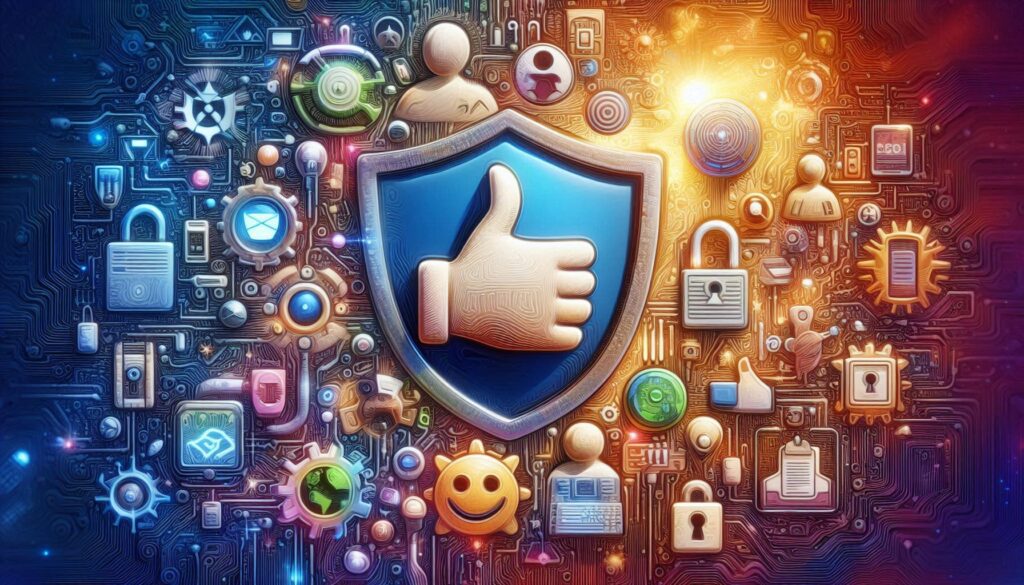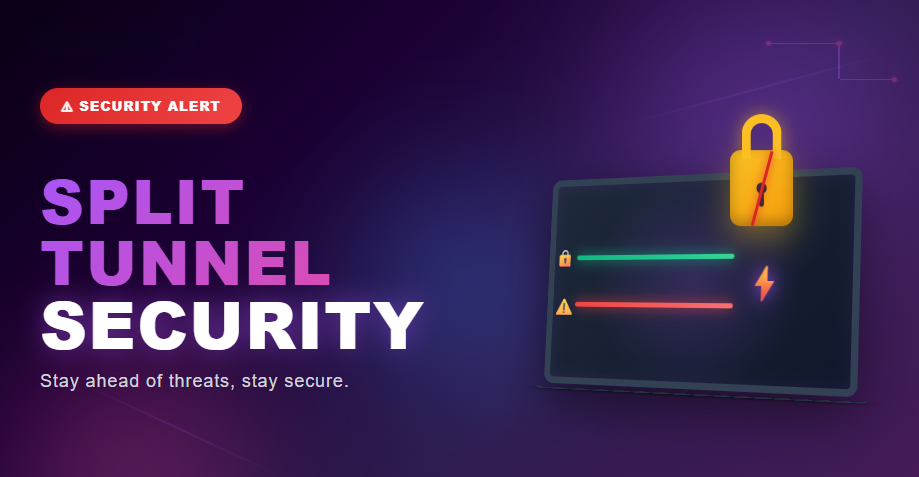Stealers Everywhere: Are You Next in the Cybercrime Crosshairs?

“In a digital world teeming with information stealers, is your data really yours, or have you unwittingly surrendered it to cybercriminals?”
Each day, millions of users remain endangered because malware silently waits in the dark to steal the personal data of its victims. It’s not an unseen evil looming over people; it is a significant threat that encompasses people, companies, and nations as well. As hackers continue to scale up in their attacks, the difference between safety and danger in the internet has never been this thin.
The information stealor threat is only growing and now, it is time to learn how these threats work and how you can protect yourself with a VPN. In the upcoming series of articles, we will demystify the ugly truths hidden behind these malicious creations, examine the consequences for your privacy, and share tips about what you can do to protect your valuable information in a world where every mouse click matters.
The Emergence of Information Stealers: A Growing Threat
How might information stealers have become the new favorite assets of cybercriminals? Today, in the era when data is a new oil, personal and corporate information becomes highly valuable. Not surprisingly, cybercriminals have wised up and these days information stealers are what they use. But what drives this trend? Is it the convenience, the non-gated approach or something more malicious?
The information stealers are types of malware intended to gather user credentials, identity information, financial details, or any other personal information, secretly without user’s consent. These tools are a part of the larger ‘enforcement’ of cybercrime, often serving as the entry point to other forms of attack such as identity theft, online financial fraud, corporate spying, etc.
Over the last few years, information stealers have spread because of their availability, as well as the advent of paid subscriptions. Unlike using a PC to hack into a system, many of the stealers are bought on the dark web marketplaces for 10-20 USD monthly subscription.
This model reduces the barriers to entry to the ‘business’ of identity theft wherein greenhorns are given a chance to make fortunes from personalities or organizations whose identity has been stolen online. There are still many people who will start dreaming about getting money at first sight, so the scale of cyber threats is only increasing.
The scale of this threat is staggering. According to Kaspersky Digital Footprint Intelligence, almost 10 million devices, both personal and corporate, were attacked by information stealers in 2023 alone.
The fact that it is as high as 2.91% points to the fact that information stealars no longer remain as the threats of a single operating system for a specific set of users but are now pests for almost everyone. Also, it worth to notice that the quantity of hacked devices might be even higher because many stealer owners do not share all the logs analyze right after the data stealing procedure.
This data reveals a troubling trend: as more people and firms connect to the internet, linking other activities raises the potential hazards of those courses of action. When AV comparisons do address information stealers, it is only a part of the overall malware detection and removal process.
The sophistication of information stealers has risen steadily in the past year and these threats are quickly becoming available to the masses Due to the availability of the information stealer and the fact that it is capable of stealing anything from almost any computer and delivering it to any address in the world, these threats pose a significant threat to online users as well as
Case Study: The Kral Stealer
Is Kral stealer an awakening to how vulnerable devices are to malware?” To that end, the Kral stealer is one such harrowing example of how advanced and fluid, cyber criminals are becoming that even the most unsuspecting systems can be infected in a blink of an eye. So if you think you are safe then you have another thing coming.
Detailed Analysis:
In the context of the types of information stealers, the Kral stealer is much more advanced than mere script-based malware. First detected in mid-2023 as Aurora stealer loader, Kral has developed into a standalone stealer since then. This evolution underlines the fact that cyber threats are fluid where malware move and feeds off the dynamics of the targets.
Functionality and Operation:
The Kral downloader is most often introduced to devices through unsafe advertisements linked to web pages containing adult content. Depending on the website, when an unaware user enters the website, they can be guided to a phishing site which presents a download link that is malicious. This file, which is displayed as a download and is fully legal, is in fact the Kral downloader. This insidious approach highlights a critical vulnerability: how ordinary use of the internet services may lead to online dangers.
It acts as a kind of Trojan that is activated once it is installed, and which accomplishes several tasks that let it run invisibly in the background. However, as the reader may have already noticed, the downloader has evolved considerably as a result of the authors learning from their own experience; at an early stage, it was written using a mix of C++, Delphi, and produced rather large samples.
However, newer versions are authored only in C++ and without a doubt, the footprint of each is significantly smaller and are not easy to spot.
The how functioning of Kral stealer shed light on its horrific nature of its functions. Although after a month or so it shut down, both the down loader and the stealer look strikingly similar in their critical codes raising issues on their relation ship and how much more nasty versions can be created from it.
For example, they employ the same function for the checking of binary integrity (WinVerifyTrust), and use the same encryption key in strings. Moreover, both malware types are signed and have the Kral name within the PDB paths of them; this means that the attackers develop such programs deliberately and constructively, which is another problem for heuristics.
As for the data harvesting ability, the Kral stealer focuses on cryptocurrency wallets and browser data, which is an important asset to the modern world. Once it collects sensitive information, it creates a random folder in the C:Local information regarding the system which has been compromised include time, zone information and CPU information and the data has been stored in the \%ProgramData\% folder. This folder is then zipped and uploaded to a command and control (C2) server using the Background Intelligent Transfer Service (BITS).
The most shocking thing about the Kral stealer is that it works perfectly. It only gathers data only once per instance, thus if the user by mistake opens the infected file again, it can stage another heist. It also enhances the effectiveness of the stealer and this is why users need to be informed to avoid such infections.
Read more: How effective are VPNs in defending against phishing attacks, and what are their limitations?
Are We Putting Ourselves at Risk by Visiting Seemingly Harmless Websites?

When internet surfing has become an ordinary activity, one may come to a conclusion that most websites are secure to access. But this Kral stealer is a good example that even quite ordinary websites can hide certain threats behind their veneer. The question looms large: In other words, are we constantly exposing ourselves to risk every time we join the click through to the next link?
Security Risks:
The Kral stealer mainly aims at collecting important data: cryptocurrency wallets and browser activity. This focus reveals a chilling truth about the nature of cybercrime: The threat actors are looking for opportunities to monetize digital property and people’s information more and more.
- Data Collection Mechanism: The Kral stealer uses different methods in order to obtain the necessary data. Once it penetrates a device, it runs in the shadows which makes it hard for the device’s users to even know that it is there. The stealer creates a folder in the C:a folder , whereby it stores not only stolen data, but also paramount system information such as local time upon capture, the time zone, and the CPU specifics. It is gathered for cyber criminals so that they can easily identify every aspect of the victims’ system and attack them accordingly.
- Transmitting Stolen Information: After loads the required data the Kral stealer processed the information in the form of the zip file and then sends the information to the C2 server with the help the Background Intelligent Transfer Service (BITS). This transmission process is basically similar to the previous transmission methods but modifies itself in a way to camouflage itself with other genuine Windows services; this makes it very difficult for security experts to apprehend and block this malware. That is why the Kral stealer is becoming more and more conspicuous and hard to be identified by users and anti-virus programs to remove it before the compromising of the data.
- Focus on Cryptocurrency Wallets: Availability of Cryptocurrencies has introduced new opportunities for hackers; thus, cryptocurrency wallets became the primary targets for information stealers. The Kral stealer specializes in stealing the private key and login data linked to different cryptocurrencies. Since cryptocurrencies are dispersed, once access is achieved, the initial owners can wake up to find their digital funds gone in the blink of an eye.
- Impact on Browser Data: However, besides stealing cryptocurrency wallets, the Kral stealer gathers a big amount of browser data. These are saved passwords, autofill information and browsing history among other things. It is through the use of such data that one can breach the privacy of the online accounts and steal the identity, and embezzle funds. However, the information gathered can be peddled on the dark web where cybercriminals can make a lot of money from.
One shocking example of how the mere visit to what seems to be harmless website can harm your system is the Kral stealer. It also brings out the importance of users being very careful when using the internet.
Realizing that the threat of information stealers is always around the corner, can make individuals prepare and protect themselves by implementing the following preventive measures, including using Virtual Private Networks (VPNs) that may camouflage one’s activities thus minimizing easy prey to the stealers.
Read more: How to Recover Your Money from a Cyber Crime Scam: Step-by-Step Guide
The AMOS Stealer: A New Breed of Malware
Could the AMOS stealer signal a dangerous trend in macOS malware?
The digital environment is changing and with it appears threats that distort out the idea that macOS is protected from malicious programs. Meet the AMOS stealer — a complex virus that makes you wonder about macOS security.
It is loads of impressive that the AMOS stealer works with a highly advanced level of emulation. It disguises itself as normal software, unsuspecting users only think they are downloading genuine programs. AMOS was first seen in early 2023, but it proved to be much more systematic in the months that followed. I observed that a new domain appeared by June 2024, which posed as the genuine Homebrew package manager, which macOS users often research and turn to for updates.
- Deceptive Tactics:
The users can accidentally get to the site through the malvertising technique, which involves the use of advertisements to take the wanted person to a fake website. Once on the spoofed Homebrew site, users are presented with two seemingly innocuous options to install software: they can either download an infected DMG image directly or use an installation script Secondly vulnerable Macs can either run an infected DMG image directly or use an installation script. This kind of approach shows how smart the stealer is: users are convinced they are dealing with a familiar and safe product. - Installation Process:
If the users select the installation script option, a chain is set off. The script first download the malicious image and then install it. Then, it downloads and installs an official Homebrew packet to make users think that they are using software from the trusted source. Even if the user downloads the DMG image directly, a Homebrew replica interface is presented in front of the user. Nevertheless, beneath this disguise, the AMOS stealer is to perform its malicious intent under the hood.
Is the macOS ecosystem as secure as we believe, or is it becoming a new playground for cybercriminals?
Take, for instance, the AMOS stealer that we have come across; this shows that the security of macOS platforms is under enormous pressure as never before. The public may have once believed that they are shielded from malware attacks because they are using the Apple operating system. However, the existence of malware like AMOS questions the above notion highlighting insecurities that attackers are only too willing to capitalize on.
Consequences of Infection:
The consequences of an AMOS infection can be very serious and dramatic within an organisation. Once embedded in a system, the stealer begins to gather sensitive information, including:
- User Passwords:
AMOS uses what appear to be normal dialog boxes that you are likely to answer with your details without realizing it is actually fake. Unlike most keyloggers, this stealer helps itself to user passwords by displaying boxes asking the users to enter them, therefore susceptible to defaulting to entering their passwords. - System Information Collection:
Apart from passwords, AMOS gathers a large amount of system information, it generates session history files that the user is not aware of, and monitors the user activities . It can be of immense value for the criminals to opposite the cybercriminals and cause specific vulnerabilities. - Identity Theft and Financial Loss:
The probable impacts of AMOS infection on the affected patients are catastrophic. Entered credentials prove useful to an attacker to gain access to individuals’ and organizations’ financial accounts with an added likelihood of identity theft and loss of a huge sum of money. In addition, the information acquired can be sold in the dark web to facilitate the perpetration of cybercrime that goes on and on.
With the appearance of the AMOS stealer, a new page in macOS malware is opened. What this means is that users cannot afford to be complacent as more and more hackers learn how to deceive users through trickery. Using a VPN can act as one’s shield, in a way protect the actions online, and reduce the chances of being a victim of such enhanced malware.
The Vidar/ACR Connection: A Deep Dive
Is the Vidar stealer proof that cybercriminals are becoming more sophisticated in their approaches?
More so, as attackers reshape their strategies to deal with the current world, we can appreciate how much the Vidar stealer demonstrates how malware evolution is becoming extreme. Taking the best of its parts, Vidar perfectly illustrates just how multifaceted and obscure cyber threats are becoming.
Mechanics of Vidar:
The main work of Vidar is performed through social engineering techniques and this is a strategy that uses human psychological tricks to install malware on the system without the owner’s consent. Another painful trick to apply by Vidar is using free services such as YouTube for delivering the mandatory link.
- Social Engineering Tactics:
Those who work in Vidar use comments to videos on the YouTube to place links that are a way to download ZIP or RAR archives from the most popular sites for sharing files. This technique utilizes one of the main pillars on which users rely on social media and video content. When a user is browsing comments and discussions, sometimes they come across normal-looking comments telling the user to download the archive and get amazing stuff like software or media files. - Password-Protected Archives:
After the click, the user is redirected to a password protected archive folder where he has to enter a password. There is, of course, the password right underneath the link, a common strategy to keep the audience involved and to counter potential doubts. This is a smart move as this puts the potential victim under pressure to continue with the download having his/her guards lowered to a new threat.
How effective are traditional security measures against the evolving landscape of cyber threats?
The case of Vidar is a good example where advanced malware appears that ordinary measures to protect systems are no longer effective. While most people use antivirus software, firewalls and other appropriate protocols in defending their systems from cyber criminals, these are sometimes not enough.
- Limitations of Traditional Security:
Traditional security measures, for example, can deal primarily with specific threats, using approach based on signatures. However, due to continuous updated versions of Malware attacks with additional using social engineering techniques, these protective measures can be easily overcome. Unwittingly consumers permit malware into their networks and thus traditional security controls fail in practice settings. - The Role of User Awareness:
Due to the shortcomings of the conventional security methodologies, it is on the users to be vigilant to fight threats such as Vidar. Two things that can go a long way in preventing infection are knowledge of the schemes used by hackers, and not downloading files from people that one does not know. Thoroughly orienting users of possible threats they can experience when opening links or downloading files from unknown sources is critical in today’s world.
Data Exfiltration:
The Vidar malware was designed to primarily target organizations and gain unauthorized access to their data; it has a close link to ACR stealer as part of cybercriminal’s roster.
- Collaborative Functionality:
Although it does not contain the tool for direct exfiltration of data, Vidar is used to deliver the ACR stealer. Upon installation, Vidar will begin to download the ACR stealer within the background of the victim’s PC It targets browser data and currency wallet details exclusively. Such partnership enables the cyber attackers to get the most out of their, in this case data stealing talent while they attack several forms of information at once. - Types of Data Targeted:
Both Vidar and ACR focus on high-value data, including:- Browser Credentials: Usernames and passwords stored in web browsers, enabling unauthorized access to online accounts.
- Cryptocurrency Wallet Information: Sensitive details related to digital wallets, allowing attackers to drain funds or conduct further financial fraud.
- Personal Identifiable Information (PII): Names, addresses, and other identifying information that can be exploited for identity theft or phishing attacks.
The consequences of the theft of this type of data cannot be overstated. The existing negative consequences of accounts compromise include identity theft, loss of financial security and a list of related problems. While hackers’ methods are constantly changing and improving their skills and not losing the level of their motivation, the users themselves should take some measures on their own.
The link between Vidar/ACR reflects a new wave of attack methods in Internet business and commerce. As the approaches adopted become more elaborate, conventional security products may not be adequate. People need to be educated, and should be encouraged, to use strong protective measures such as VPNs to reduce the dangers of these emerging threats.
The Real Cost of Data Theft

Is data theft more damaging than we realize, and what are the real consequences for individuals and businesses?
These days data is considered to be the most valuable asset, and the consequences that data stealing entails concern not only money lost but also other severe consequences as well. Realising the actual cost of stolen credentials paints a worrisome picture that many perhaps do not have a clear appreciation of.
Consequences:
- Financial Loss:
- If a person’s credentials are compromised fraudsters are able to perform unlawful transactions dipping into the person’s accounts thus creating strain and confusion for the users. It becomes disastrous to business when it takes the effect of lost of revenue, legal expenses and expenses incurred in respecting the rising consequences of the misdeed.
- The cost of data breach is said to range from thousands of dollars to millions, it entirely depends on the size of the company, and the kind of information leak involved.
- Identity Theft:
- While others may discover that their personal identity has been compromised by data theft, because a thief can use the retrieved information to open accounts or apply for a loan in the sufferers’ identity. This turns into several years of almost complete disharmony in fulfilling their financial responsibilities and rebuilding their credit and self-identities.
- Corporate Breaches:
- Organizations on the receiving end of cyber attacks lose valuable data to hackers and companies experience a blow on their repute. Customer trust erodes business and has lasting ramifications that hamper corporate revenues within the long-term.
- The Equifax and Target hacks clarify just how much data loss can hurt an organization’s credibility and erode customer trust and lead to regulatory fines.
What does it mean for our privacy when our data is up for sale on the dark web?
Data theft has further repercussion in the privacy front. Thus, if personal data is for sale in the Dark Web, some vital questions concerning human rights and privacy appear.
- The Dark Web Marketplace:
- Such a stolen data is sold at various dark web markets where hackers simply auction personal information. This process of turning data into commodities reduces people’s privacy because the ownership of data is also commoditized.
- Sometimes, it will take months or even a year and two or three before victims finally come to the realization that their data has been stolen, and it is out there on the market, ready to be peddled to the highest bidder.
Real-Life Examples:
- Case Study 1: Capital One Data Breach
Earlier in they year 2019, a former employee of a cloud computing company exposed customer data of more than one hundred million Capital One customers. The breach was fined $80 million and ruined the reputation of the bank. - Case Study 2: T-Mobile Data Breach
For instance, the T-Mobile firm was a recent victim of a cyber attack that released information of 40 million customers with social security numbers and number of driver’s license. The latter involved a legal battle and shrinking consumers’ confidence.
Such examples give an insight to the actual value of data loss in addition to money, and the effects on privacy, security and reputation in future.
The Role of VPNs: Myth vs. Reality
Can VPNs truly protect us from information stealers, or are they just a band-aid on a much larger issue?
With evolvement of threatening operations, users increasingly depend on Virtual Private Networks (VPNs) as a presumed remedy against anonymity assaults. Thus, their use creates vital questions not only in relation to the efficiency of protection against complex threats.
Functionality Overview:
- How VPNs Work:
- VPNs make a channel for your internet connection where your data is protected and your IP is hidden. This affords anonymity and shields end users from eavesdropping on public connections and makes them attractive to users with concerns over privacy.
- Intended Purpose:
- In its broad usage, the primary use of a VPN is to improve privacy whilst internet surfing especially in the use of insecure connections. However the question that remains to be answered is whether this is enough to protect against new generation information stealers.
Are we over-relying on VPNs while ignoring fundamental security practices?
As much as VPNs provide a level of protection, they don’t provide the full security necessity. Confidence in utilizing only a VPN is a wrong approach since it will make people forget about other basic security features.
- Vulnerability to Sophisticated Malware:
- VPNs cannot offer any Immunisation to all forms of malware. For instance, if a user downloads a file and it turns out to be a virus, or if the user is a victim of phishing, the VPN will not protect him/her. Even the most complex forms of malware can run covertly, and avoid VPN encryption altogether.
- The Need for Comprehensive Security Measures:
- Researchers should not solely depend on VPN’s as a method of security. While VPN needs to be used, there should be other best practices in place, including; Use of multi-factor authentication, using strong and unique passwords, updating software frequently.
Limitations of VPNs:
- Potential Misconceptions:
- Potential users often presume that browsing by a VPN implies total anonymity. However, VPN providers can still monitor such activity and malware- and phishing-prone VPNs can be just around the corner.
- Legal and Policy Constraints:
- The work of VPNs is often hampered by the fact that some countries partially or completely prohibit their use. Furthermore, in such jurisdictions as those that banned the storage of certain data types, encrypted traffic also becomes transparent.
In as much as VPNs serve to increase security on the internet, they are not a solution to all cyber security risks. Therefore, protection based on the use of VPNs and other protection means should be multifaceted as the threats in the modern world are becoming more dangerous.
Proactive Measures: Protecting Yourself in a Digital World

Is it time to rethink our approach to online security?
Cybercrime and threats are constantly changing, so are methods to guard the users’ personal information. The conventional approaches may be inadequate given the growing complexities of the hacker warfare strategies.
Best Practices:
- Use Strong, Unique Passwords:
- It is wise to champion for the use of password that cannot be easily cracked by a third party. Propose using small and capital letters, numbers and symbols as well.
- Explain that the specific site requires a different password to the others to reduce the risk of one attack escalating to the other accounts.
- Enable Two-Factor Authentication (2FA):
- Describing how it works by implementing an additional check which most often is a text message code or code from an authentication app when signing in for the second time.
- Stress that this simple step can significantly reduce the risk of unauthorized access to accounts.
- Be Cautious with Downloads:
- Tell the reader that it is unsafe to download software or files from unaccredited sources.
- Advise them to always confirm from the legitimacy of the sites they intend to download from as well as content the users have to say about the site.
What steps can we take today to safeguard our digital lives?
- Stay Informed About Cyber Threats:
- Suggest that readers of the article should follow recent cybersecurity news and changes in the activity of scammers.
- Regularly Update Software and Devices:
- Inform the users to update operating systems, software applications, and antivirus often because majority of the threats take advantage of existing weak spots.
- Conduct Regular Security Audits:
- Suggest users to check over their accounts on the internet and profile information sharing, and revoke any permissions given to any application and service disliked.
Community Awareness:
- Educate Others:
- Strengthen the position that information on threats should be disseminated within communities as often as possible.
- This should make readers engage their friends, family and working associates about security issues making everyone to be more aware of insecurity incidences.
FAQs:
1. What are information stealers?
Viruses created purposely to provide unauthorised access to the user accounts and other personal details and identity which are sold on a black market.
2. How can I recognize if my device is infected with a stealer?
Other things to look out for include unexplainable changes in your accounts, slow processing speed, uninstaled programs,constant pop-ups and notifications from your antivirus software.
3. Are all VPNs equally effective?
No, VPN effectiveness varies. Consult, whether the provider’s policy is indeed ‘no logs’, has secured connections, choice of servers, and user feedbacks.
4. Can I completely eliminate the risk of data theft?
No but one can minimize risk which includes; using complex passwords, having two-factor authentication and being careful when using the internet.
5. What should I do if I suspect my data has been stolen?
Update passwords, use two factors authentication, review financial statements, inform the institutions involved and perform a scan.
Loading newsletter form...






